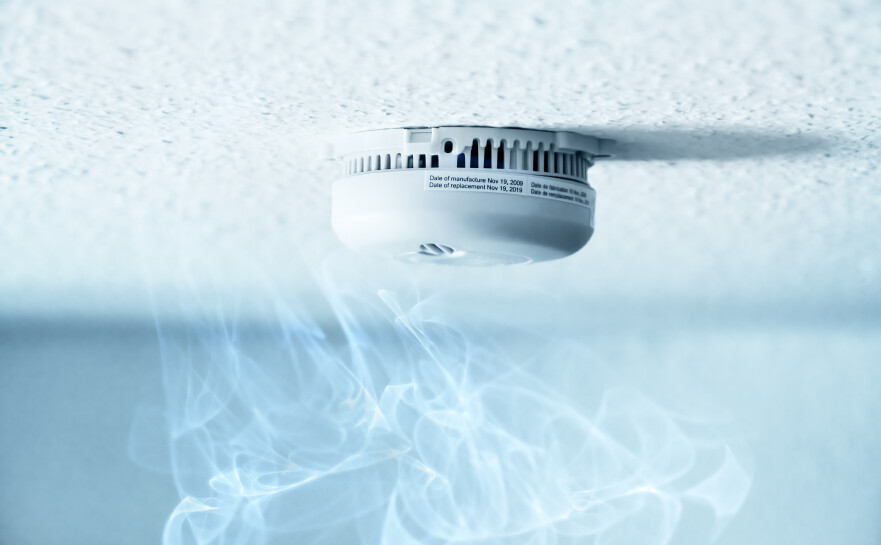Consumer Products
Radioactivity is essential for several commonplace items in Canadian homes and businesses. In some cases, the presence of radioisotopes in these consumer products is required by law and can even save lives.
Smoke detectors are the most common consumer product that uses nuclear technology. They work by putting a source of alpha radiation, usually americium-241, near an ion detector. The alpha particles ionize the air molecules. That is, they separate an electron from the rest of the molecule, leaving the two halves with an electric charge. The electric charge is detectable by the device and, if there is enough smoke in the air, the charge drops, and the detector sounds an alert. This design allows smoke detectors to work for a long time, because americium-241 has a half-life of 458 years.
Emergency exit signs help illuminate dark corridors during power outages to guide people to safety. They don’t run on backup power because they have to function even when backup power fails. Instead, they’re powered by tritium, a radioactive isotope of hydrogen. Tritium releases beta particles that produce fluorescent light when they interact with phosphors in the sign.
Trace levels of radioactivity may also come from other common home items. For example, many Canadian homes feature granite countertops. Because granite is cooled magma, it contains a mixture of many elements, including traces of some radioactive isotopes, such as uranium, radium and thorium.
Some antique items, such as Vaseline glass and Fiesta dishware, contain trace levels of radioactivity, as both were imbued with uranium for coloration purposes.
In each of these cases, the levels of radioactivity are very low and extremely safe.

